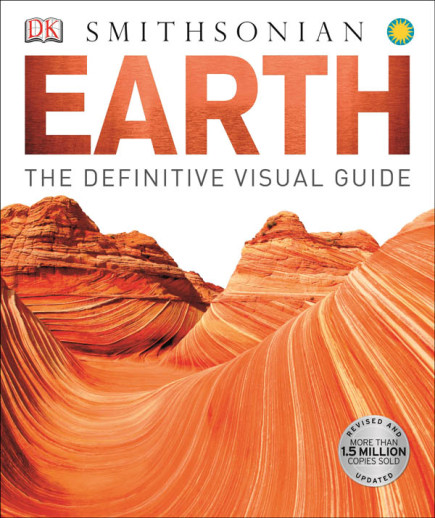We use cookies to make your experience better. To comply with the new e-Privacy directive, we need to ask for your consent to set the cookies. Learn more.
Earth (Smithsonian) 2nd ed.
This beautifully illustrated DK book is divided into 5 main sections, all of which highlight different features of the Earth. Gorgeous pictures and illustrations present Planet Earth, Land, Ocean, Atmosphere, and Tectonic Earth in an eye-appealing format. An introductory section titled "Dynamic Earth" gives an overview of what you can expect in the book's content as it takes you through the interactions of the earth and the forces which are constantly at work.
The first section, Planet Earth, talks about the earth as a whole and gives the history of the earth, the earth as it exists within the universe, the anatomy of the earth, and how the earth is changing over time. Land, Ocean, and Atmosphere are the earth's 3 main environments, and each includes introductory material, features found in each environment and how they are formed, and major features highlighted with pictures and additional information. Tectonic Earth offers profiles of the Earth's 7 major plates and population density and political boundary maps. Each section is scattered throughout with thematic panels which include photos, illustrations, notable people, information, data, and statistics.
Probably my favorite parts of this book are the references for rocks, minerals, mountains, and volcanoes. Rock and mineral guides are found in the 'Anatomy of the Earth' section of the book. These guides show full-color pictures of rock and mineral specimens and give specific information about each of them. Mineral information includes composition, hardness, color, crystal system, and specific gravity while the information for each rock specimen includes the origin, color, and grain size. The location of featured mountains and volcanoes is shown on a small map along with the type, length, and activity and or last eruption, along with other pertinent information. This book isn't just gorgeous; it is a great reference tool as well.
The information is presented from a secular perspective. You'll find information about the Big Bang Theory, global warming, and biodiversity along with a plethora of good earth science information. ~ Donna
Earth: The Definitive Visual Guide is an extraordinary survey of our planet produced in collaboration with the Smithsonian Institution.
This stunning reference includes detailed, illustrated information about everything that makes up our planet, from Mount Kilimanjaro to the Antarctic ice sheet, as well as descriptions_1 of more than four hundred of the Earth's most significant, unusual, greatest, and most dangerous features.
Specially commissioned new 3-D digital artwork provides a striking, informative guide to the features of our planet, explains the scientific processes that govern our world, and looks at the complex relationship between humans and the natural environment while providing a thought-provoking assessment on the state of the planet.
| Product Format: | Softcover Book |
|---|---|
| Brand: | Dorling Kindersley |
| Author: | James F. Luhr |
| Grades: | 7-AD |
| ISBN: | 9781465414373 |
| Length in Inches: | 10.25 |
| Width in Inches: | 8.5 |
| Height in Inches: | 1.25 |
| Weight in Pounds: | 5.95 |

